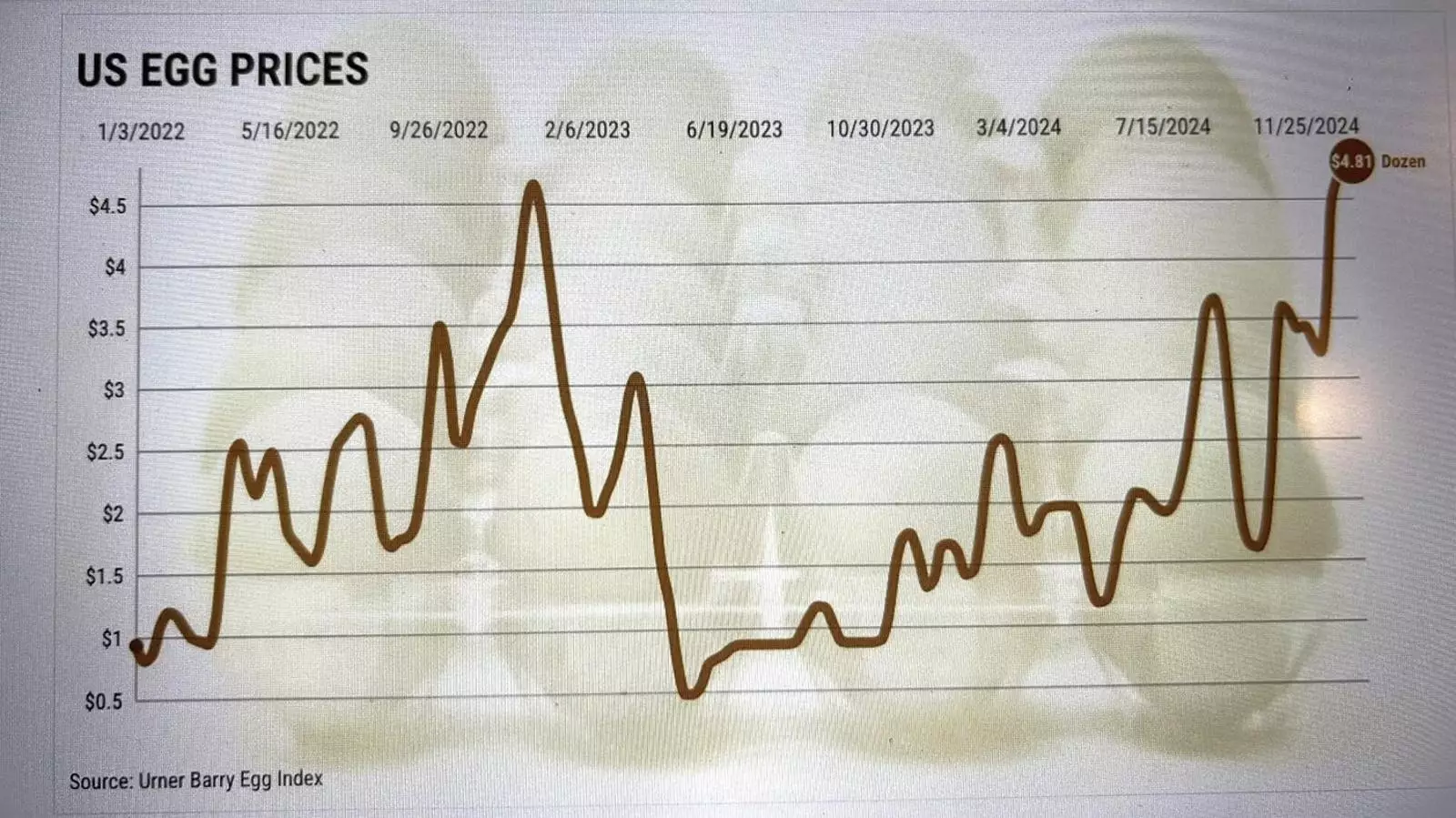Egg prices have been on the rise, sparking significant consumer concern and backlash. A dozen Grade A large eggs, which retail for about $4.15 today, were only $2.52 a year ago. This striking 36.8% increase prompts questions about the factors influencing such price fluctuations. Let’s explore the intricate web of economics, agriculture, and environmental factors that contribute to the current state of the egg market.
One might think of the classic riddle about whether the chicken or the egg came first, yet this age-old question seems to be at the heart of current discussions about egg prices. It is crucial to comprehend that chicken availability is a foundational element in egg production. The general public’s focus often rests solely on egg prices, neglecting the nuanced shifts in poultry costs and availability.
In an ideal world, a healthy hen would start laying eggs after approximately 4.5 months. However, increasing demand for eggs places severe pressure on suppliers, making it challenging to maintain a consistent supply. The complexities are amplified when supply cannot meet demand, leading to soaring prices—a classic economic principle. When public demand spikes, the resulting scarcity forces prices to climb rapidly as suppliers struggle to keep pace.
An array of dynamic variables influences the price of eggs, but it often boils down to timing and availability. Consumer trends have shifted noticeably towards poultry products, especially as red meat consumption declines. This change creates additional demand for eggs, which, in turn, stresses the already strained supply chain. When combined with unpredictable environmental factors, such as the ongoing impacts of climate change, the situation grows dire.
Perhaps the most significant catalyst for the recent surge in egg prices can be traced back to the avian flu outbreak in 2022. This devastating disease has claimed the lives of nearly 147.25 million birds, forming a devastating impact on poultry availability across the United States. With only around 379 million egg-laying hens remaining in 2024—an increase of merely 1% from the previous year—losses amounting to nearly 39% of the flock present a daunting challenge for egg production.
The health of hen populations is not just impacted by disease; it’s also vulnerable to climate-related disasters. Over the past two years, the U.S. has experienced a staggering 73 climate and weather-related disasters, each with hefty financial implications for growers. The challenges of raising hens that can produce eggs sustainably, even in the face of such calamities, serve as a constant reminder of how vulnerable the agricultural sector is to both natural and man-made disruptions.
As we traverse through 2024, the ongoing spread of avian flu poses a real threat. Reports from the Centers for Disease Control and Prevention (CDC) and the USDA indicate that 19.63 million birds across 29 states are currently infected. The need for quick, humane culling of these infected birds further complicates the already strained egg supply, leading to predictions that prices will escalate by more than 20% in the near future.
The complexities surrounding egg production and pricing highlight a critical truth: there is no quick fix to these challenges. The governmental avenues for intervention, while explored, may fall short in delivering immediate relief to consumers facing food inflation. As we look ahead, the forecast remains grim, particularly as consumer demand continues unabated, coinciding with the increasing anticipation for gatherings centered around holidays like Easter.
Moreover, the relationship between agricultural trends and consumer behavior is intricate, with each feeding into the other. As we become more informed and conscious consumers, learning to navigate these economic currents can empower us. Being aware of deals and shopping strategically can help mitigate the effects of persisting high prices.
The surging costs of eggs result from a confluence of clever economics, ecological realities, and unforeseen circumstances. As these elements intertwine, they reshape the landscape of food prices across the board. For the foreseeable future, egg prices will undoubtedly remain a hot topic, requiring ongoing vigilance and adaptation from consumers.

